If you’ve ever decorated an American Christmas tree, you may have heard of the odd tradition of hiding a glass pickle ornament among the branches. The child who finds it first on Christmas morning supposedly earns a reward or an extra present. It is one of the quirkiest holiday customs in the United States, yet its origins are surprisingly mysterious. For years it has been attributed to German immigrants, but when asked, most Germans had never heard of a “Christmas pickle.” So where did this strange little tradition come from?
Community
Shake It Off at The Taylor Party: Taylor Swift Dance Night Returns to The Brightside
 Calling all Swifties! Are you ready for it?
Calling all Swifties! Are you ready for it?
The Brightside Music and Event Venue is bringing back THE TAYLOR PARTY, a Taylor Swift-inspired dance celebration on Friday, December 19th from 9:00 PM to 11:50 PM. This 18+ event invites fans to relive the magic of all Taylor’s iconic Eras in one unforgettable night.
Whether you’re still processing the Eras Tour on Disney+ or just need an excuse to break out your best Era-inspired outfit, this is your moment. The Taylor Party promises an enchanting evening of singing, dancing, and celebrating everything Taylor Swift with fellow fans.
Pick your favorite Era outfit (will it be Folklore cottage core or Midnights sparkle?), grab your besties, and get ready to party in style. From “Love Story” to “Anti-Hero,” every Era will be represented on the dance floor.
Long live the magic you’ll make at this ultimate Swiftie celebration! Get your tickets now before they’re gone—this party is sure to sell out faster than you can say “It’s me, hi, I’m the problem, it’s me.”
Event Details:
- When: Friday, December 19, 2025, 9:00 PM – 11:50 PM (Doors open at 8:00 PM)
- Where: The Brightside, 905 E 3rd St, Dayton, OH 45402
- Age: 18+
- Tickets: $20 GA advance / $25 at the door – https://www.thebrightsidedayton.com/event-details/the-taylor-party-taylor-swift-night-18-1
For more information and tickets, visit thebrightsidedayton.com
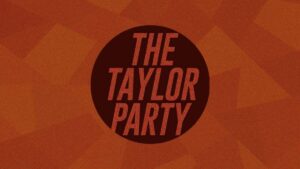
Wreath Across America
It was an honor for VA nurse emeritus , Margaret Kruckemeyer to help lay wreaths at the gravesites of veterans who did so much to ensure the freedom we Americans enjoy today.
Most of the 8,300 wreaths for this year’s Wreath Across America event were placed on gravesites after the noon WAA honoring ceremony at Dayton’s National VA Cemetery by volunteers from Dayton community

However, one wreath needed to travel to Woodlawn’s historic cemetery where another highly respected military leader and her veteran husband Dr Stanley Earley lay in rest . Best known for her leading the 6888th BN that shattered many records in overseas mail delivery during WW II as well as being known as first all black women US Army group, Charity Adams-Earley continued to nurture and create opportunities for young black women in Dayton “to be the the best they could be “ to achieve careers in all professional areas of their choice.
Santa’s Wonderland Nights Brings an Indoor North Pole Adventure to Dayton
 Families in the Miami Valley will step straight into the magic of the North Pole this season as Santa’s Wonderland Nights opens its doors December 12 at 5679 Webster Street in Dayton, Ohio. The brand-new indoor Christmas experience transforms a warehouse into Santa’s Kringleworks— a hidden “North Pole District” where Christmas magic is imagined, built, tested, and shipped around the world.
Families in the Miami Valley will step straight into the magic of the North Pole this season as Santa’s Wonderland Nights opens its doors December 12 at 5679 Webster Street in Dayton, Ohio. The brand-new indoor Christmas experience transforms a warehouse into Santa’s Kringleworks— a hidden “North Pole District” where Christmas magic is imagined, built, tested, and shipped around the world.
Designed as a fully themed night out rather than a quick walk-through, Santa’s Wonderland Nights offers guests approximately 2.5 hours of interactive holiday fun. Every ticket includes a seated holiday dinner, access to nine immersive rooms filled with 16 different activities and games, and a meet-and-greet with Santa complete with photo opportunities.
“Parents are always looking for something that feels bigger than a light walk or a quick mall visit,” said the event’s creators at A & L Entertainment Immersive. “Santa’s Wonderland Nights is designed as an evening you sink into — you sit down for dinner together, you explore room by room, you play, build, discover, and actually make memories side by side.”
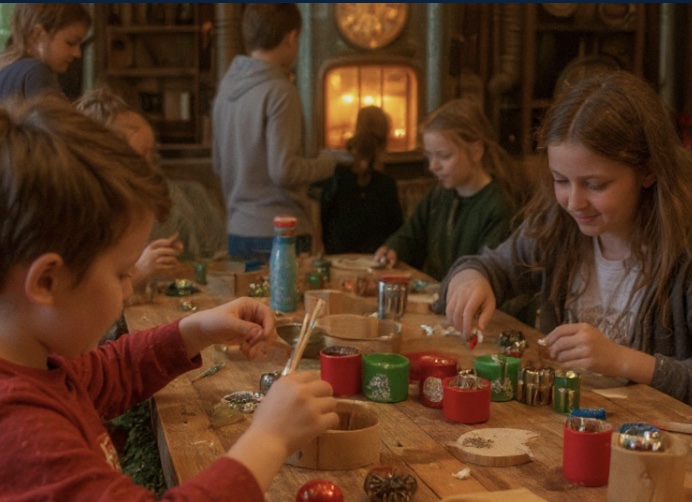
The Elf Toy Co
Inside Santa’s Kringleworks:
Guests begin their evening in the Celestial Hall, where they enjoy a festive dinner and a round of holiday trivia before being released into the Kringleworks to explore. From there, they move at their own pace through nine handcrafted rooms, each built as a different corner of the North Pole District, including:
- The Elf Toy Co. – Build a small toy to take home and try hands-on elf-style tasks
- Peppermint Power Plant – A code-cracking game where families help “power” the North Pole
- The Old Map Room – A constellation and navigation game that plays like a living puzzle
- The Post Office & Starlight Mailroom – Write and deliver letters straight to Santa
- Elf Pantry & Cookie Labs – Decorate cookies and enjoy sweet treats
- Kringle’s Corner – Meet Santa and take family photos in a themed sleigh setting
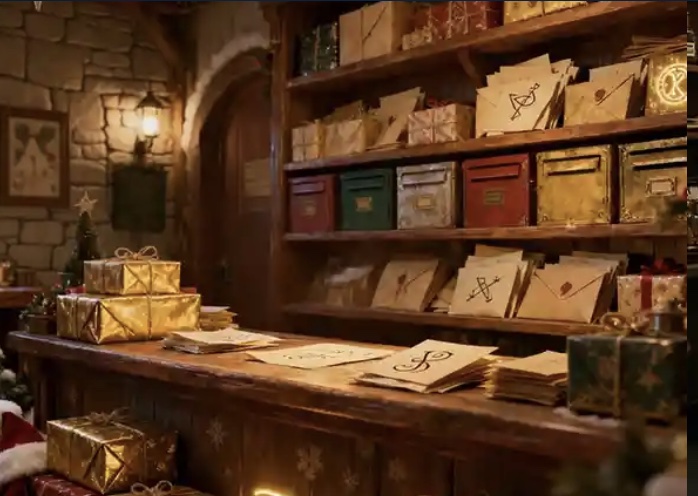
The Post Office & Starlight Mailroom
Across these rooms, families can take on 16 different activities, games, and challenges, ranging from logic puzzles and scavenger hunts to sensory guessing games and creative stations. The event is strictly limited to 100 guests per night, keeping lines short and allowing families to linger in each space.
Dinner, Dessert & More Included
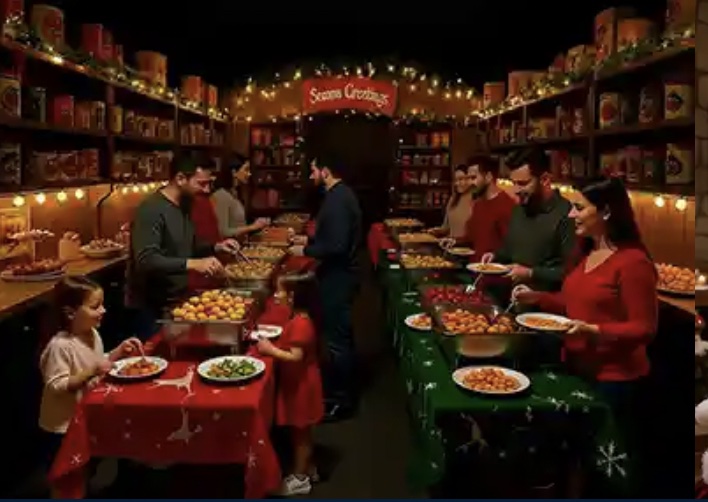
Dinner in the Celestial Hall
Unlike many ticketed holiday attractions that charge extra for food or photos, one ticket at Santa’s Wonderland Nights includes the entire evening:
- Holiday dinner in the Celestial Hall (with options including spiral-sliced ham, eggplant parm, and kid-friendly meals)
- Dessert and an ice cream bar
- Nine immersive rooms of themed environments and puzzles
- 16 activities and games suitable for kids and adults
- Photos and meet-and-greet with Santa
Tickets are available only on select nights from December 12 through January 4.

Peppermint Power Plant
From the Creators of Blackwood Manor Halloween Bash
Santa’s Wonderland Nights is produced by A & L Entertainment Immersive, the same team behind Dayton’s Blackwood Manor Halloween Bash, a sold-out immersive Halloween event that drew strong word-of-mouth and enthusiastic reviews from families earlier this year.
“After Blackwood Manor, so many families asked us if we could do something just as special for Christmas,” the creators added. “Santa’s Wonderland Nights is our answer to that — a holiday world that feels big, detailed, and handcrafted, but still cozy enough that your kids feel like they’re really part of the story.”
Event Details
- Event: Santa’s Wonderland Nights – The Kringleworks
- Dates: December 12, 2025 – January 4, 2026
- Duration: Approx. 2.5 hours per event
- Location: 5679 Webster Street, Dayton, OH 45414
- Capacity: Strictly limited to 100 guests per night
- Tickets: Available exclusively online
For more information and to reserve tickets, visit SantasFunNight.com.
Fifth Annual Holly Days At The Arcade
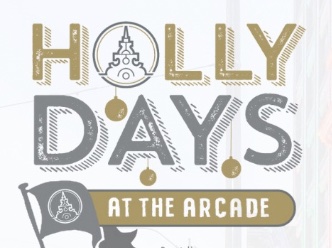
The magic returns with this annual three-day event in the Arcade’s event spaces which will feature holiday shopping live entertainment, family-friendly activities and performances, a cash bar, and holiday surprises. Wed, Dec 10 – Fri, Dec 12th 3- 8pm
There are 3 event entrances on different streets – 35 W. Fourth Street, 31 S. Main Street, and 24 W. Third Street.
Local makers and artisans selling handmade gifts, décor, jewelry, ceramics, wearables, treats, and more

Live music and performances that fill the event spaces with cheer
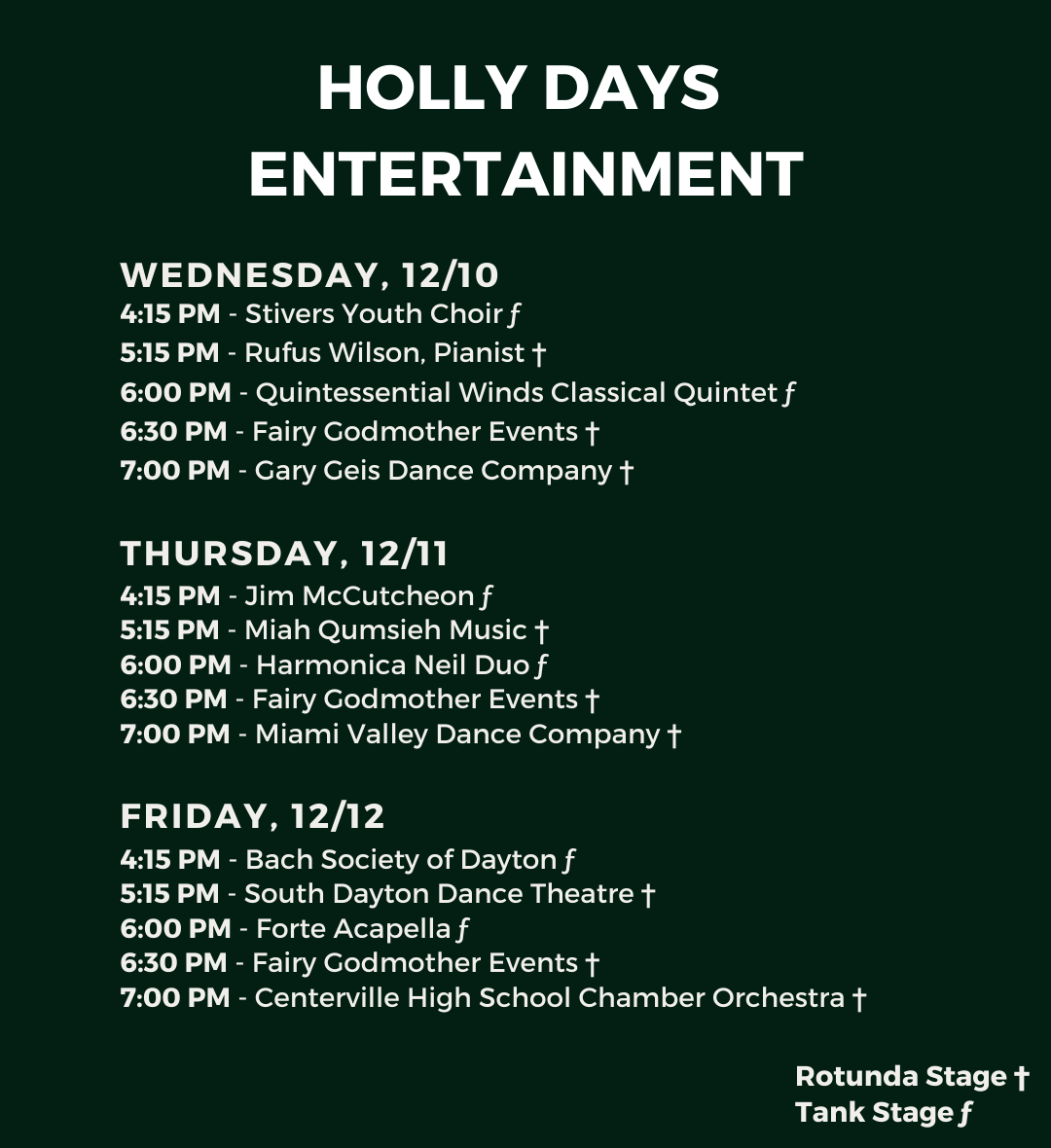
Dining at food trucks:

A food and monetary donation drive for Miami Valley Meals
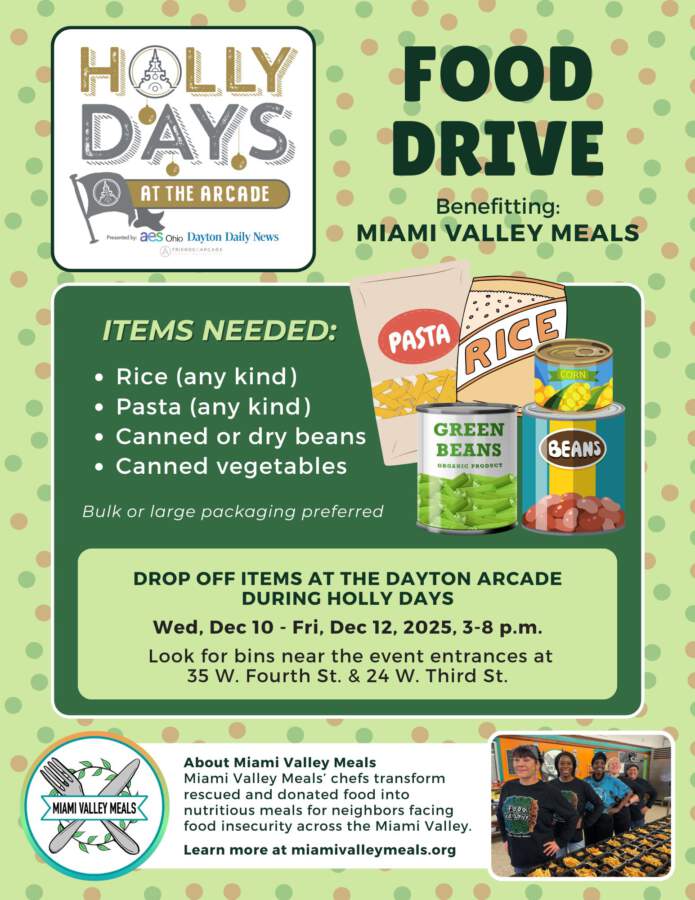
Visit our neighbors at DENEAU TOWER , 40 W. Fourth St. for an espresso martini bar, letters to Santa, and live music!
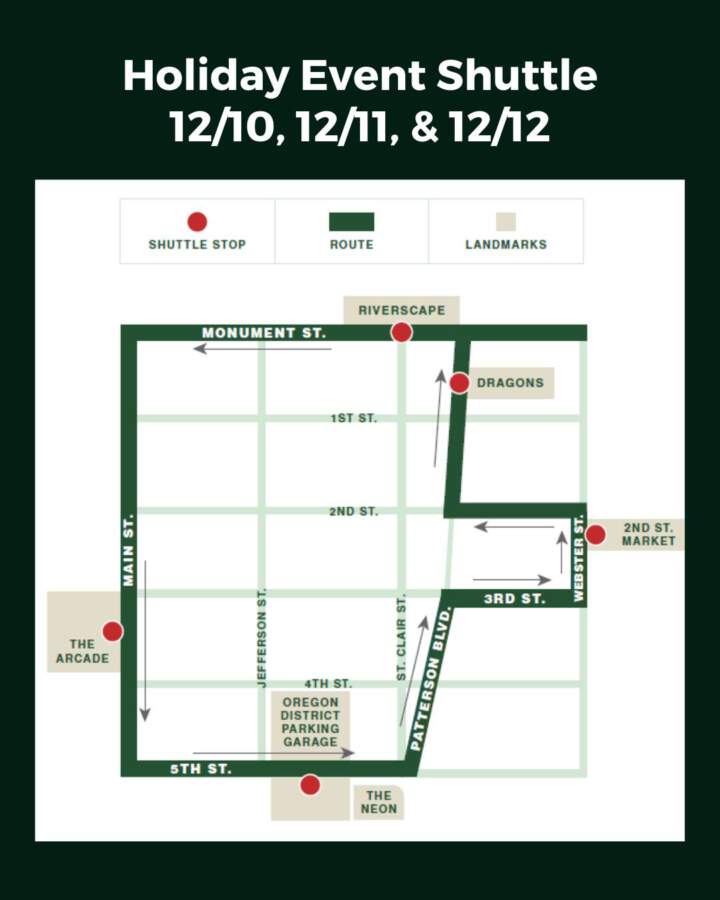
Trivia Triumph Punctuates RubiGirls’ ‘Best Season Ever!’



 With almost 700 seats sold for the annual ‘Show Must Go On‘ at the historic Arcade, the RubiGirls again proved they are a force for good in the Dayton area. This year, the ‘Girls’ were deep into their ‘Best Season Ever‘ which was, in reality, their 41st year raising fun and funds. Within their 41st season, The Girls were able to benefit 110 local non-profits and charities, and provide scholarships to five graduating high school students in the area. It was, at the very least, a breakthrough year in terms of funds raised. ‘What we experienced was not what many non-profits felt this year. Our donations were sound and solid, and our shows were full at every turn. It is interesting to note that we have been able to find a path through tougher times. It seems that entertainment is truly craved in the area, and we do it with humor and parody. The laughs led to donations. Donations lead to helping as many as we can in the region.’ Says the ‘Mother Rubi’ herself, Dana Sintell. Along with Fonda Peters, the two have been here for every single season. ‘We have seen it all over the years. Right now, we are seeing a big increase in concern for charitable organizations! Being a pass-through organization, we have the ability to take those donations and easily disperse them to multiple organizations. People like knowing that a donation to us helps many!’ said Sintell.
With almost 700 seats sold for the annual ‘Show Must Go On‘ at the historic Arcade, the RubiGirls again proved they are a force for good in the Dayton area. This year, the ‘Girls’ were deep into their ‘Best Season Ever‘ which was, in reality, their 41st year raising fun and funds. Within their 41st season, The Girls were able to benefit 110 local non-profits and charities, and provide scholarships to five graduating high school students in the area. It was, at the very least, a breakthrough year in terms of funds raised. ‘What we experienced was not what many non-profits felt this year. Our donations were sound and solid, and our shows were full at every turn. It is interesting to note that we have been able to find a path through tougher times. It seems that entertainment is truly craved in the area, and we do it with humor and parody. The laughs led to donations. Donations lead to helping as many as we can in the region.’ Says the ‘Mother Rubi’ herself, Dana Sintell. Along with Fonda Peters, the two have been here for every single season. ‘We have seen it all over the years. Right now, we are seeing a big increase in concern for charitable organizations! Being a pass-through organization, we have the ability to take those donations and easily disperse them to multiple organizations. People like knowing that a donation to us helps many!’ said Sintell.

Rubi Girls – The show Must Go On! – 2025
The history of the Girls is well-known in the area. A group of college friends started putting on shows on Rubicon Street (thus the name), and the shows found an audience quickly. From that attic (in a house since torn down,) the girls found their mission…fighting discrimination and HIV! ‘It took off around 1985. We were bringing laughter to some dark times. And we found our footing there! It exploded as the need for HIV dollars became an emergency.’ Dayton’s legendary drag troop was born.
With that, they have had the internal battles that were sure to follow a group of grown men doing shows for 41 years around the city, state, and even country. ‘We’ve had drama! But this season proved we still have the love and laughter people so desire.’ Their Best Season Ever drew to a close on 12/8 at the Dayton Art Institute with a fun-filled night of trivia. ‘We had the 3 old goats together. Dana was there, Fonda, too, and the beloved India Summer. We are the longest-lasting performers in the RubiFamily. We know how to play off of each other well. It was a great way to end the season. A packed house, a ton of laughs, and a new set of faces who left endeared to our mission.’
We had to ask the inevitable question…’If this is the Best Season Ever, what happens next season?’
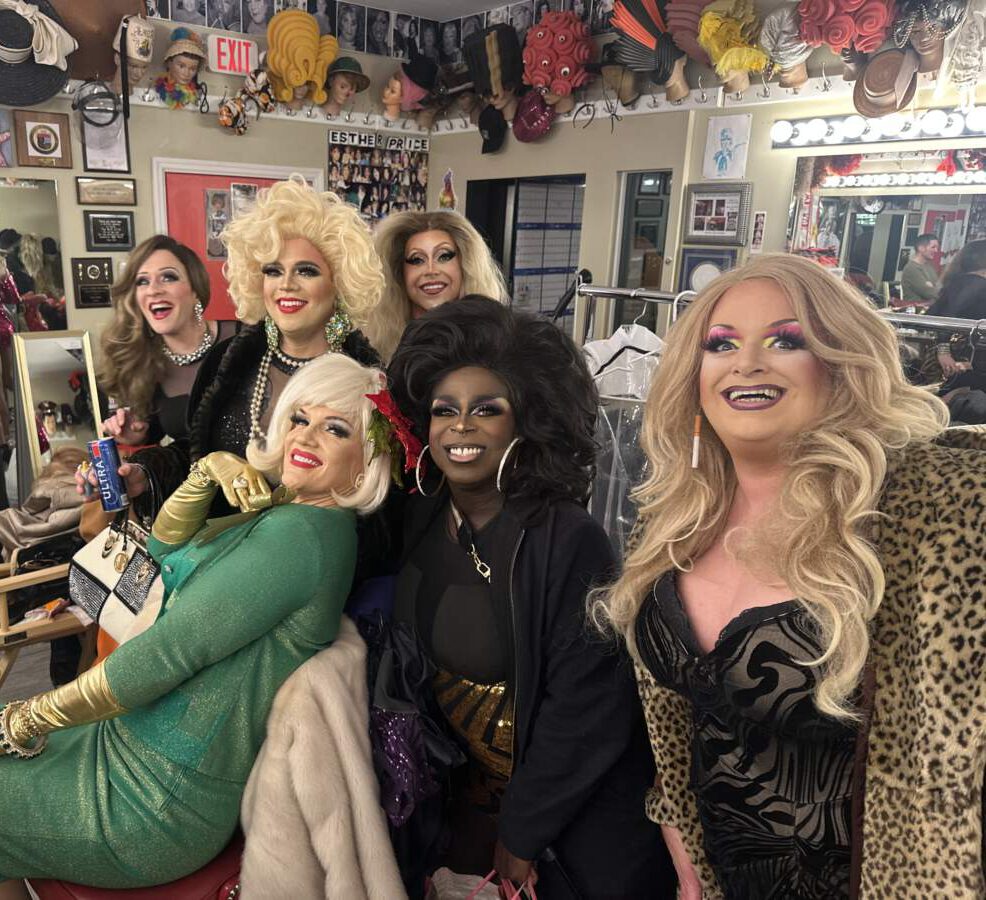 ‘Oh, we got that figured out! Next season is ‘Better Than The Best Season Ever!‘ Sintell quipped. ‘Listen, we have people out there who really are in need. We have to keep elevating what we bring to the city we love!!’
‘Oh, we got that figured out! Next season is ‘Better Than The Best Season Ever!‘ Sintell quipped. ‘Listen, we have people out there who really are in need. We have to keep elevating what we bring to the city we love!!’
You can donate to the RubiGirls and follow their schedules at https://therubigirls.com/ Merchandise and sponsorships are available as well.
***The Girls are made up of local professionals that use their talent solely for fund-raising purposes.
If you are a nonprofit or know of a charity in need, have them reach out to the website and click the Grants on the website.
Dayton at Work and Play: Protest Art
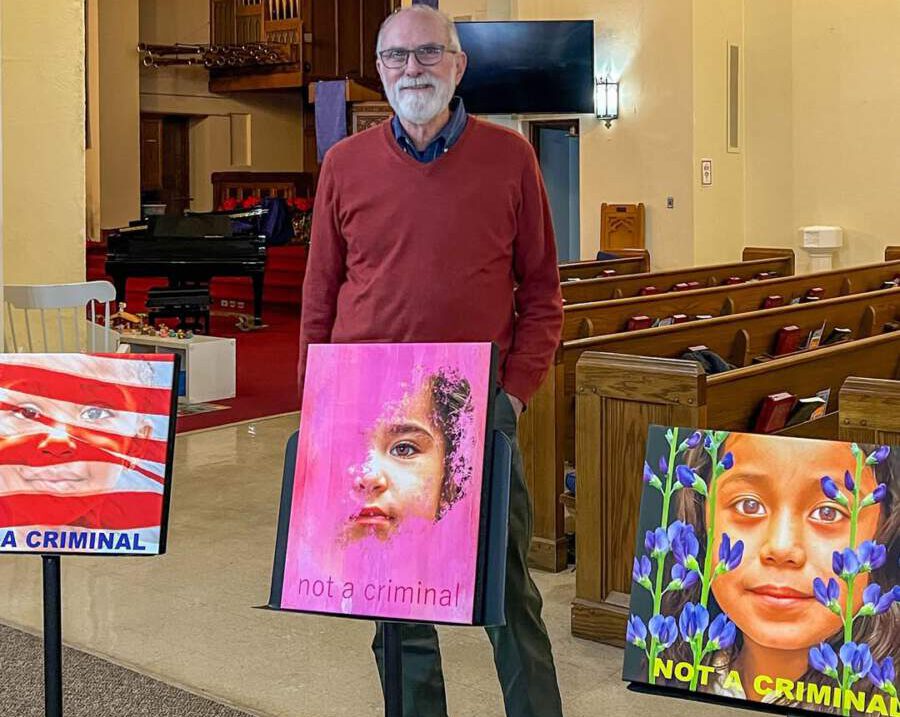
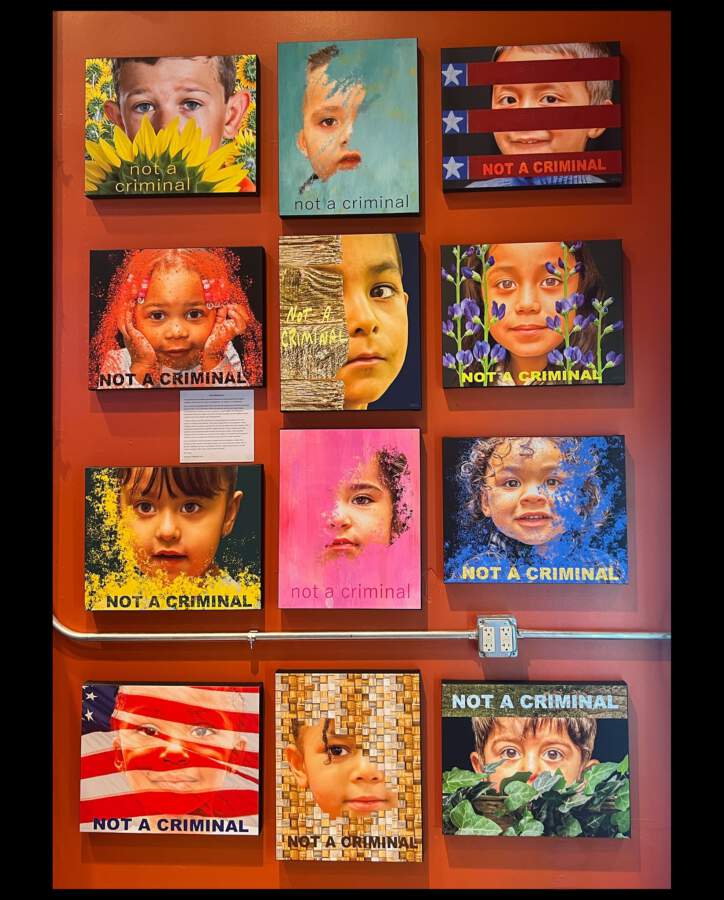
Shake It Off at The Taylor Party: Taylor Swift Dance Night Coming to The Brightside
 Calling all Swifties! Get ready to dance through the Eras as The Taylor Party brings a Taylor Swift-inspired dance celebration to The Brightside Music & Event Venue on Friday, December 19th.
Calling all Swifties! Get ready to dance through the Eras as The Taylor Party brings a Taylor Swift-inspired dance celebration to The Brightside Music & Event Venue on Friday, December 19th.
This enchanting evening promises a journey through all of Taylor Swift’s iconic Eras, from her country beginnings to her latest chart-topping hits. Whether you’re Team “Fearless,” “1989,” “folklore,” or riding the “Eras Tour” wave, this party is designed for fans to celebrate the music that’s become the soundtrack to their lives.
An Evening of Swiftie Magic
The Taylor Party isn’t just a concert—it’s an immersive experience where attendees are encouraged to dress up in their favorite Era-inspired outfits. Channel your inner “Reputation” era with sequins and attitude, go full “Lover” with pastels and butterflies, or embrace the cottagecore vibes of “folklore” and “evermore.” The fashion possibilities are as endless as Taylor’s catalog.
Doors open at 8 PM, with the dance party kicking off at 9 PM and running until midnight. DJs will be spinning Swift’s biggest hits all night long, giving fans plenty of time to sing along to every word and create unforgettable moments with fellow Swifties.
 Event Details
Event Details
When: Friday, December 19, 2025
Doors: 8 PM
Show: 9 PM – 12 AM
Where: The Brightside Music & Event Venue, 905 E 3rd St, Dayton
Tickets: $20 in advance / $25 day of show
Age: 18+
Advance tickets are available now for $20, with day-of-show tickets priced at $25. Given the massive popularity of all things Taylor Swift right now, early ticket purchase is recommended to secure your spot at what’s sure to be one of the hottest dance parties of the holiday season.
The event is open to ages 18 and up, making it the perfect pre-holiday celebration for college students home for winter break and young professionals looking to end 2025 on a high note.
About The Brightside
Located at 905 E 3rd St in downtown Dayton, The Brightside Music & Event Venue has become a go-to destination for unique entertainment experiences in the Miami Valley. The venue’s intimate atmosphere makes it ideal for themed dance parties where everyone can feel part of the celebration.
So grab your besties, pick your Era, and get ready to make some magic. As Taylor herself would say, “Long live all the magic we made!”
For tickets and more information, visit The Brightside’s website or social media channels. Don’t miss your chance to be part of The Taylor Party—after all, it’s been a long time coming, and we’re ready for it.
Are you attending The Taylor Party? Tag us in your Era-inspired outfit photos and use #TaylorPartyDayton to connect with other local Swifties!
Nominate A Miami Valley Entrepreneurs 35 Years & Under For BBB Spark Award
 Better Business Bureau serving Dayton & the Miami Valley is pleased to announce nominations are open for the 2026 BBB Spark Award. This award honors trustworthy entrepreneurs, 35 and under or new business owners of any age operating for less than three years. Recipients of the award should embody and cultivate the Three C’s of Trust: Character, Culture and Community. These character-driven leaders and organizations are the future of our trusted marketplace.
Better Business Bureau serving Dayton & the Miami Valley is pleased to announce nominations are open for the 2026 BBB Spark Award. This award honors trustworthy entrepreneurs, 35 and under or new business owners of any age operating for less than three years. Recipients of the award should embody and cultivate the Three C’s of Trust: Character, Culture and Community. These character-driven leaders and organizations are the future of our trusted marketplace.
Applications and nominations are accepted online. If you would like to nominate an organization, the deadline to do so is February 2, 2026. Nominated organizations must complete and submit their application by March 2, 2026. (Organizations may self-nominate.) Information regarding award criteria can also be found at this Web site.

The Spark Award winners will be announced on May 12, 2026 at the BBB’s Torch Award For Ethics Dinner. Additionally, recipients will be involved in telling their stories at BBB events throughout the year.
The Class of 2026 honorees will inspire others to take the leap into successful entrepreneurship. If you, or someone you know, is a young leader of an outstanding entrepreneurial company, submit a nomination or entry for the Spark Award today.
Christy Mauch, interim president and CEO of BBB serving Dayton/Miami Valley says, “The Miami Valley has many dynamic young business leaders and we are thrilled to spotlight them with this honor. Help us recognize their courage and success as they lead innovation in our community. These individuals have earned it. Submit a nomination today.”
If you have questions regarding this recognition, call (937) 610-2270 or email [email protected]
Enjoy the Ride ‘Back to the Future!’
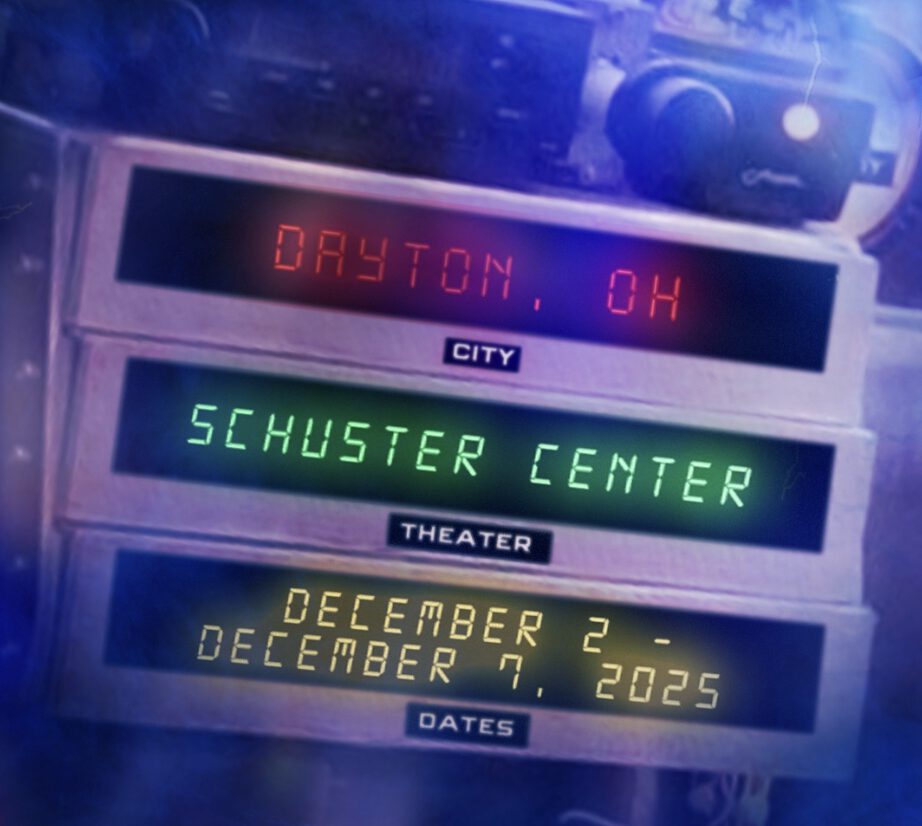
‘Oh My God….that car was amazing!’ ‘The backdrops were eye-popping!’ ‘I loved the tongue-in-cheek musical numbers!’
‘Back to the Future’ at the Schuster, is a free-wheeling tribute to the beloved movie, and a lot more! Although the songs, which at times can feel a little bit karaoke, are full-on fun and silly, you often lose focus on a cast that is giving it their all throughout the romp. I couldn’t help but notice that folks were anxious in the first act to see the ‘legendary’ DeLorean and its magical entrance. Meanwhile, a story is being told for all of us as well. Through hi-tech staging…and reminders of days gone by (1985 was 40 years ago….WTF!)….we are thrown into a land of the McFly family which remains true to the form as created for the film. There are some fun, if not over-the-top, intros to each of the family members. Lucas Marty does a good job of maintaining the look and vibe for movie fans. Mike Bindemann‘s George is funky and endearing. Fisher Lane Stewart gives 110% to the Dave role, and Abbey Freidmann‘s Linda foots the bill. Perhaps the McFly to watch in this performance is Zan Berube‘s Lorraine. She seamlessly does it all…gives you the frump, the fabulous, and ‘freaky’ sides of the mom figure!
The energy picks up in the theatre when David Josefberg‘s take on Doc Brown, hits the stage. Throughout the show, he makes his moments, HIS MOMENTS! Also of note, Cartreze Tucker belting ‘Gotta Start Somewhere’ and the devilish performance by Nathaniel Hackmann as Biff. And yes, the car. The CAR! I didn’t want to like it…almost was dead-set on not liking it…just to be contrary. But the truth is, it’s pretty astounding to watch. Blended with backgrounds that look alive and real (the high school gym scene is a mind-trip!)…the car is, in its own way, another star of the show!
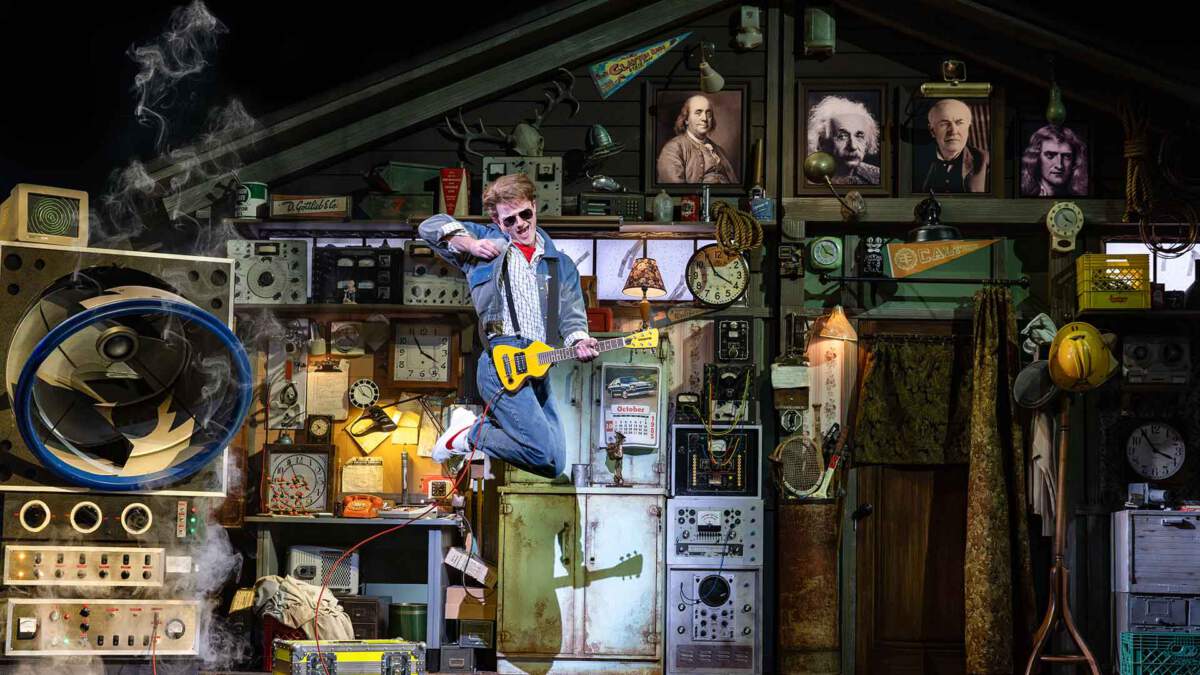 Advice…go into the theatre looking to have a good time. A fun, funny, fantastic frolic awaits….
Advice…go into the theatre looking to have a good time. A fun, funny, fantastic frolic awaits….
that kids of all ages will enjoy!
Ticket info at http://daytonlive.org
Swoon – Book Store & Wine Bar Coming to Oakwood
Pop quiz question 1:
What is the best-selling book genre in the world?
Romance novels generate billions of dollars of revenue annually. The romance genre continues to grow in appeal as writers genre-blend, branching into mystery, history, and fantasy, combining emotional depth, relationships, and niche subject popularity—think of Diana J. Gabaldon’s book series, Outlander, which merged multiple genres, featuring elements of historical fiction, romance, mystery, adventure and science fiction/fantasy—which has sold over 50 million books. The Starz network adaptation of the Outlander generated over half a billion dollars in revenue, and the it helped drive the $4.4 billion acquisition of Starz by Lionsgate. Outlander continues to bring in monies through a licensing agreement with Netflix. And Outlander is only one example of how the romance is the genre of market dominance and high profitability.
Pop quiz question 2:
What genre has been met with “relentless hostility” for decades?
Despite its market profitability, romances still grapple with literary stigma, historically, repeatedly, dismissed as “trashy,” “formulaic,” and finally denigrated into “chic lit.” An internet search of romance genre reveals pages and pages of articles attacking and defending the genre. Recent critiques have pulled away from dismissing the genre as a whole and have focused on deconstructing themes within the genre, decrying “unhealthy preoccupations with coercive sex and dominance,” “lack of representative diversity,” “anti-feminist ideals,” and “unrealistic,” portrayals of men. But still the books sell.
Pop quiz question 3:
Which genre has the strongest relationship between author/reader?
Women write eighty three percent of romances. Nathanial Hawthorne may have reviled those “scribbling women,” but the publishing industry has come to rely on the relationships that develop between romance authors and readers to drive sales. Romance authors have a direct and interactive audience that consider themselves a community of readers. Over ninety percent of romance readers are women, and these readers fill social reading sited like Goodreads and StoryGraph, fiction apps like Dreame and Wattpad, and drive publisher specific site development like Harlequin online.
Romance is a business, and the business of romance is good.
If you knew the answer to these questions, then, like me, you are going to be excited by what comes next.
Dayton is about to have a bookstore and wine bar dedicated solely to romance. When I heard that, I thought “what a good idea.” When I talked with Lauren Gay and Lindsay Woodruff about the plans for Swoon Books & Wine, I practically swooned myself with excitement. Swoon Books and Wine, coming to 2504 Far Hills Avenue, will be romance made manifest. The space will have a rococo interior, wine, full bar, and treats–both savory and sweet–from local food partners. All the books will be romances.

“We’re creating a space where a community of readers can immerse themselves in a genre they love,” Woodruff says. “It’s all about the ambience,” Gay says, “we are creating a place that will reflect the romantic experience and capture that happy ending feeling.”
Curating a space to embody a feeling is not new to Woodruff and Gay. Woodruff started Maraluna, an artisan home goods store that ensures all products are ethically produced, in Troy almost a decade ago. Since then, she has relocated it to Oakwood, and again to a larger space at 2316 Far Hills Ave. Despite the moves, Maraluna thrives, because Woodruff creates a warm and inviting atmosphere in every location. Lauren Gay also is passionate about curating her spaces to create the right vibes. A CMS certified sommelier and the owner of Joui Wine, at 117 E. Third St. in the Fire Blocks district, Gay’s passion for curating is evident. At Joui, the focus is not only on selecting just the right wine for her guests, but also about crafting the wine experience.
With this track record of success and their shared love of reading, Swoon Books and Wine promises to be a beloved spot to hang out and read. But what I loved about interviewing them is that these women are not only romance readers, but they are also like the women in the books they love: smart, talented, creators of their own destiny. And lucky for Dayton, they are also experienced entrepreneurs, creating the community they want to live in, one storefront at a time.
If you can’t wait to Swoon, you will be excited to hear they now have TWO ways you can join the fun now — eGift Cards, and the brand new Swoon Book Club!

The Swoon Book Club is launching now with three tiered offerings; each tier features a curated monthly book selection plus varying levels of in store credits, vouchers, and exclusive discounts. Swoon will also offer a limited time discounted three month subscription bundle, ideal for holiday gifting. The Swoon Book Club and eGift Cards are both available now on our website — click the links in the comments below!
Swoon Books & Wine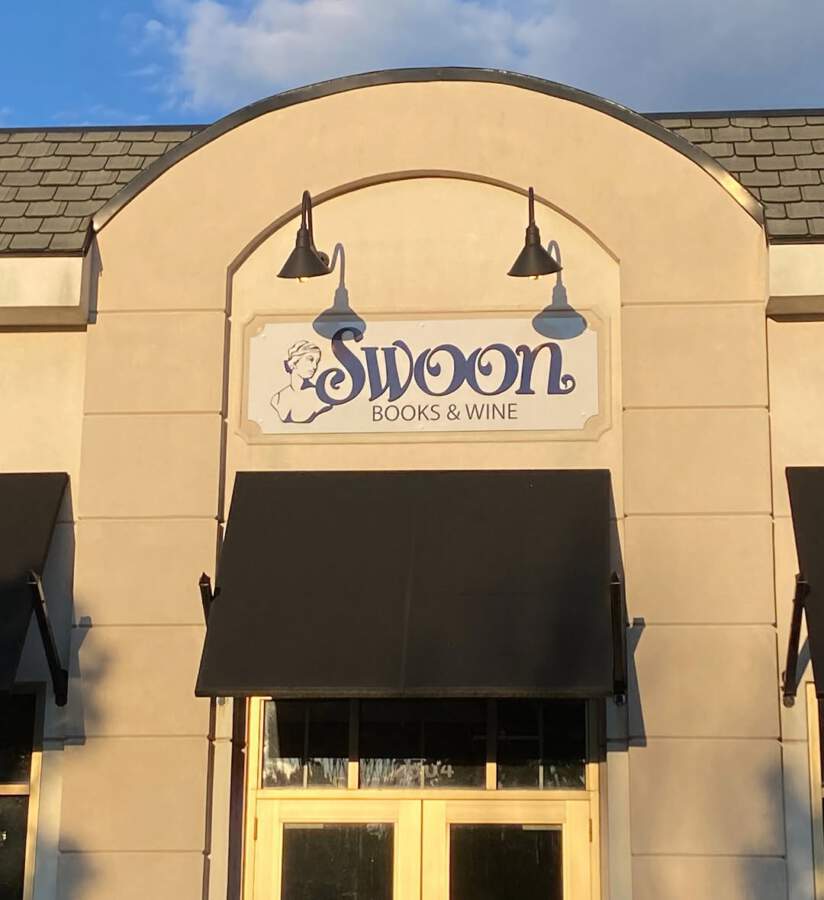
2504 Far Hills Avenue
Oakwood, Ohio 45419
COMING SOON!
Dart’N Somewhere Bar & Grill Now Open
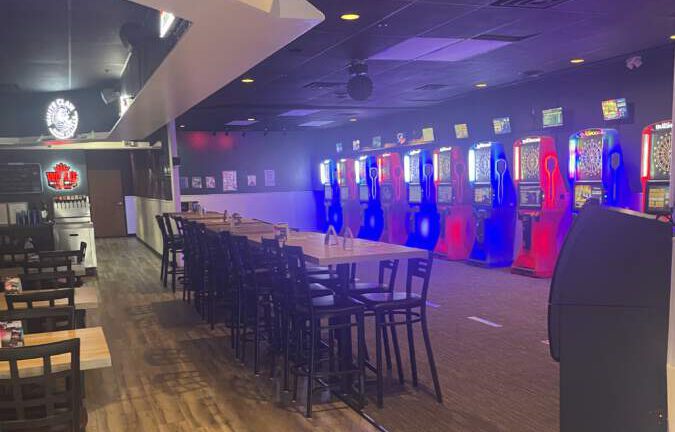

 They describe their food as “upscale bar food.” All of the food is made in house including theirr batter, sauces and dressings. All of our food is cooked to order, and it shows. They will continue to build onto the menu and will start running featured items soon.
They describe their food as “upscale bar food.” All of the food is made in house including theirr batter, sauces and dressings. All of our food is cooked to order, and it shows. They will continue to build onto the menu and will start running featured items soon.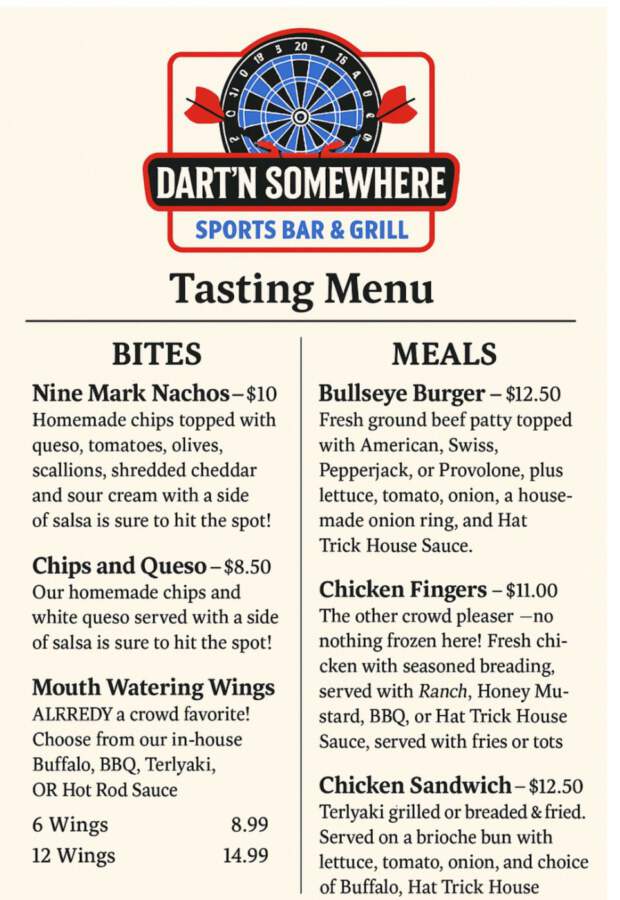
Weekly specials include:
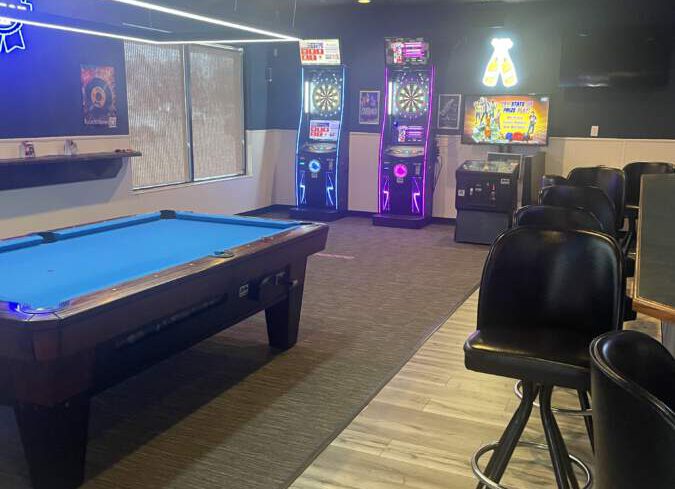
Dart’N Somewhere promotes itself as a great place for “game day” and watching sports. For those wanting to watch games, they have 10 televisions in the sports bar area with upgrades coming soon along the booth walls.
 Dayton, OH 45420
Dayton, OH 45420Open 7 days a week
11am -2:30 7 days a week
Food til 11pm
New President & CEO Selection For Destination Dayton®
 “It is with great excitement that the Board of Trustees announces the appointment of John Oney as our new President & CEO of Destination Dayton®, effective December 15,” states Board Chair Scott DeBolt. “The board is thrilled to welcome John and confident in his leadership as we move into an exciting new chapter for our organization.”
“It is with great excitement that the Board of Trustees announces the appointment of John Oney as our new President & CEO of Destination Dayton®, effective December 15,” states Board Chair Scott DeBolt. “The board is thrilled to welcome John and confident in his leadership as we move into an exciting new chapter for our organization.”
Oney will succeed outgoing President & CEO Jacquelyn Powell who will retire after over 30 years with the organization. Oney has worked in the hospitality industry for more than three decades, and currently serves as the Vice President, Sports & Meetings for Visit Virginia’s Blue Ridge where he has been responsible for developing group sales strategies that create economic impact in the form of sporting events, meetings, and conventions. Visit Virginia’s Blue Ridge is the region’s official destination marketing organization promoting the counties of Botetourt, Franklin, and Roanoke, as well as the cities of Roanoke and Salem.
The new President & CEO was selected by a special Destination Dayton Board of Directors selection committee led by Board Chair Scott DeBolt. The efforts included a national search with recognized hospitality industry executive recruitment firm SearchWide Global.
“We look forward to partnering with John and the entire team as we continue advancing our mission,” DeBolt said. “Dayton is a premier tourism destination—rooted in a rich history of innovation, shaped by a culturally vibrant quality of life, and poised for an exciting and promising future.”
According to Oney, “Dayton, Ohio is renowned for being the Birthplace of Aviation, but it’s also recognized for welcoming communities, innovative partnerships, and a genuine spirit of hospitality. I’m thrilled and honored to join the exceptional team at Destination Dayton as the next President & CEO. I am excited to begin working with the board, partners, and the team to inspire tourism in all its forms. Together, we will continue to elevate our brand and visitor economy that support our communities in so many beneficial ways.”
Prior to relocating to Roanoke, John served as the Director of Sales at the RP Funding Center in Lakeland, Florida, National Golf Sales Manager for Hammock Beach Golf Resort & Spa in Palm Coast, Florida, and Sales & Event Representative for Visit Central Florida/Polk County Tourism & Sports Marketing.
He is active in the tourism industry and previously served as Board President for Convention Sales Professional International (CSPI) and was honored with the Shawn Corwin Myland-Award (2021). He is a certified Sports Tourism Strategist (STS) through Sports ETA and currently working through his Certified Destination Management Executive (CDME) designation. He’s a proud graduate of Leadership Roanoke Valley (LRV) Class of 2023.
John graduated from Penn State University with a degree in Recreation Park Management with a focus in Professional Golf Management.
As Dayton and Montgomery County’s destination marketing organization, Destination Dayton® collaboratively leads and advocates for the development of the region’s visitor economy, which contributes to a thriving community, a diverse tax base and lifestyle amenities for everyone to enjoy. For more information about Destination Dayton® and its services, visit www.destinationdayton.org or call 800-221-8235.
DGMC ‘SLAYS’ the HOLIDAYS!
 The DGMC is ready to deck the halls for the holidays. Their annual concert, which has been a mainstay of the area for many years, promises another stellar performance. I was so excited to get to speak to member, Marc Driscoll about the upcoming event.
The DGMC is ready to deck the halls for the holidays. Their annual concert, which has been a mainstay of the area for many years, promises another stellar performance. I was so excited to get to speak to member, Marc Driscoll about the upcoming event.
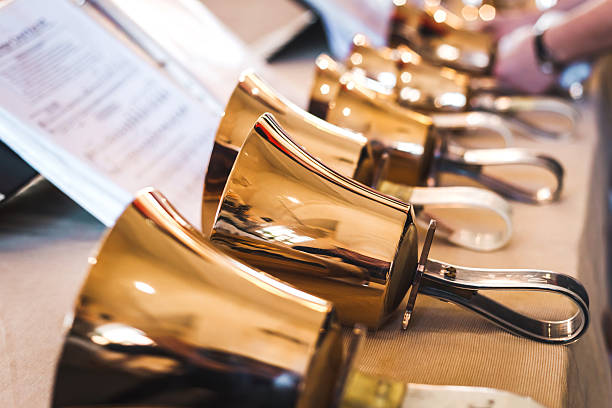
Marc: Let’s see….our small group ensemble Noteworthy is back and very excited to sing again! Director Kathy Clark wrote an original piece for the show that will leave toes a tapping. Also, there are opportunities to win raffle baskets filled with amazing prizes.
Miamisburg Sport Bar Celebrates 30th Anniversary All Month Long
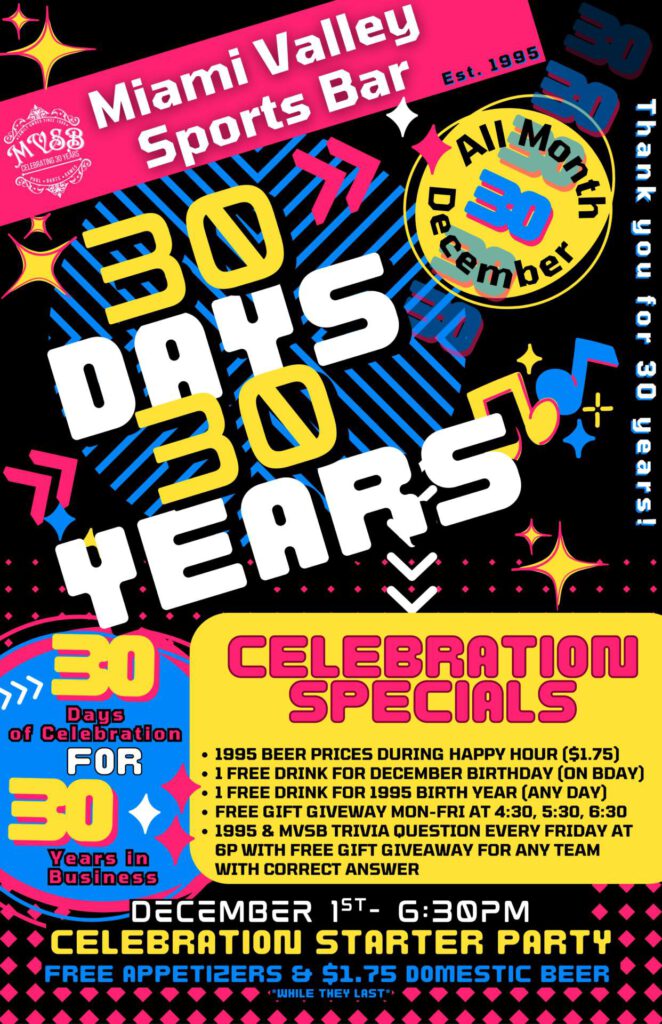 The Miami Valley Sports Bar in Miamisburg will be celebrating 30 years in business this December so second generation family owner Julie Delph has announced they are going to celebrate ALL MONTH LONG!!!!
The Miami Valley Sports Bar in Miamisburg will be celebrating 30 years in business this December so second generation family owner Julie Delph has announced they are going to celebrate ALL MONTH LONG!!!!
The party begins on Monday, December 1st as we kickoff a month long of fun and activities!
They’ll have free appetizers starting at about 6:30pm for as long as they last and 1995 priced beer for you on top of their happy and daily drink specials.
All month long they’ll be offering:
-1995 beer prices during happy hour ($1.75)
-1 Free Drink for December Birthday (on Bday)
-1 Free Drink for 1995 birth year (any Day)
-FREE gift giveway Mon-Fri at 4:30p, 5:30p, 6:30p
-1995 & MVSB trivia question every Friday at 6p with FREE GIFT giveaway for any team with correct answer
Starting December 1st they’ll also begin their Advent Calendar Daily Drawing where they add $25 to the Advent Calendar Box and draw a ticket everyday at 9pm (no purchase necessary but you must be present to win!) and give away $25! If the person drawn is not present, the money rolls over to the next day!
Haven’t been to Miami Valley Sports Bar? Here’s what you can expect thre”
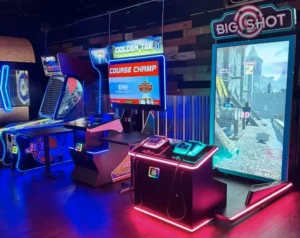 In their Arcade built for adults you’ll find pinball machines, racing games, shooting games, basketball, boxing, axe-throwing, beer pong, ping pong, Ski balland much more! From old school Touch Screen Games and pull tabs to the newest machines in Golden Tee Golf.
In their Arcade built for adults you’ll find pinball machines, racing games, shooting games, basketball, boxing, axe-throwing, beer pong, ping pong, Ski balland much more! From old school Touch Screen Games and pull tabs to the newest machines in Golden Tee Golf.
The Dart Room features 9 soft tip dart boards, its own bar, a mini dart shop. Each game is $1.25 and the machines accept dollar bills and quarters. Every Sunday night they host a Luck of the Draw Dart Tournament. The entry is $10 per person with a 100% pot match. They pay out 100% of the pot.
They have 16 standard 8 foot pool tables that are level, clean and have a smooth roll. They host multiple league options as well as weekly tournaments
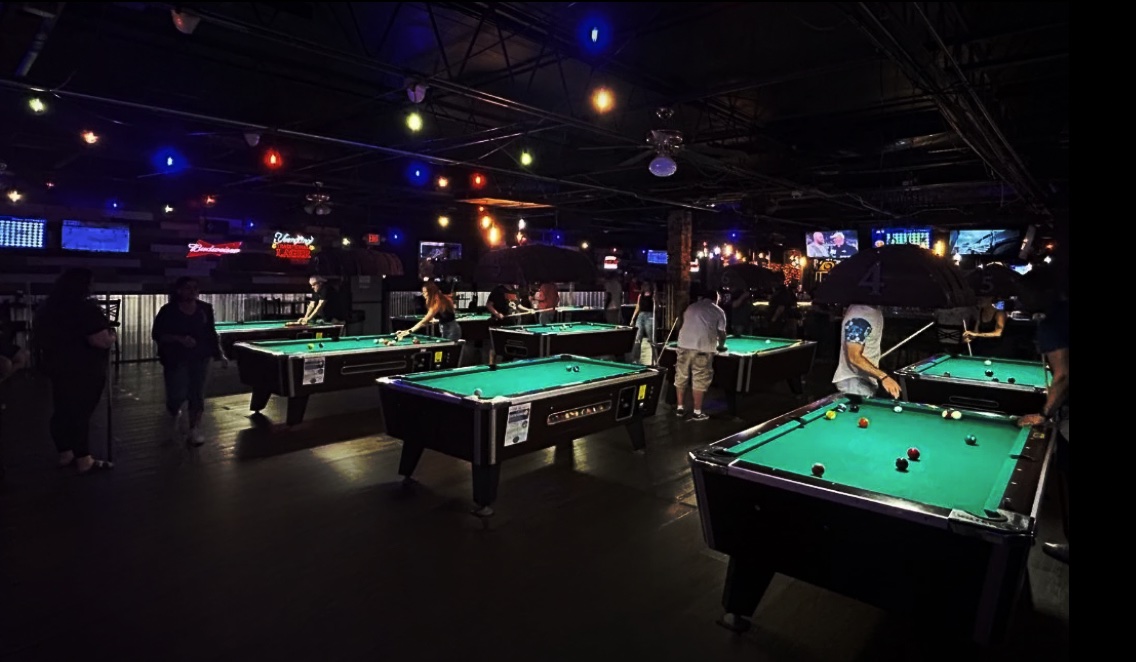
Every Friday night they host trivia starting at 6pm with free chips and salsa. Most weekends you’ll find a food truck in the parking lot. You are welcome to bring in your own food or have it delivered to the bar.
West Carrollton, OH 45449
4:00pm til 2:30am
Black Friday Restaurant Deals
 Gift cards are always popular purchases on Black Friday, and their popularity doesn’t seem to be slowing down in 2025. According to Capital One, 64% of U.S. shoppers buy gift cards to give as holiday gifts. You can shop for gift cards at any time of the year, but you tend to find the best deals on gift cards during Black Friday and Cyber Monday.
Gift cards are always popular purchases on Black Friday, and their popularity doesn’t seem to be slowing down in 2025. According to Capital One, 64% of U.S. shoppers buy gift cards to give as holiday gifts. You can shop for gift cards at any time of the year, but you tend to find the best deals on gift cards during Black Friday and Cyber Monday.
Auntie Anne’s: When you spend $30 on gift cards, you get $10 in rewards to use by Jan. 31, 2026 (redeem $5 in reward codes per purchase using the Auntie Anne’s Rewards account).
Bunkers: for every $100 in Gift Cards you Buy, we’ll give you a $30 Gift Card for free!!!
Carrabba’s: Buy $50 gift card get 2 $10 gift cards through Nov 30th.
Firebirds: Buy $100 gift card, get $25 bonus valid through Cyber Monday.
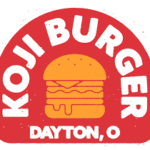
Koji Burger: Buy $50 in e-gift cards, get $10 in bonus bucks – Fri & Sat Only
McAlister’s Deli: You can purchase $25 in gift cards for $20 when you shop online from Friday, Nov. 28, to Dec. 7.
Moe’s Southwest Grill: Through Thursday, Dec. 4, when you buy $30 in gift cards get $15 in rewards (three $5 eGift cards). The rewards can be redeemed with your Moe Rewards account through Feb. 28, 20226.
Noodles & Company: Members of the chain’s Rewards loyalty program can get $5 off their order of $25 or more from Friday, Nov. 28, to Sunday, Nov. 30.
Panera: From November 20 through December 31, Panera is offering a $10 bonus card for every $50 in gift cards purchased on PaneraBread.com, in the Panera app or in a cafe. The bonus cards are valid only in January 2026.
Smoothie King: On Black Friday, get a free size upgrade on your smoothie – so order a 32-ounce smoothie and get it for the price of a 20-ounce smoothie. Members of the Healthy Rewards loyalty program also get 3X loyalty points on Black Friday.
Spaghetti Warehouse Dayton: Only available on Black Friday- Buy a $25 Gift Card and get $5 in Bonus Bucks Buy a $100 Gift Card and get a 4 for $45 Family Feast (OR $20 in Bonus Bucks).
SushiNero: Now through cyber Monday when you buy $100 you get a $15 voucher to keep for yourself! Spend $200 and get $25 and when you buy $300 you get $40 back!
Texas Roadhouse: Purchase $100 in Gift Cards & receive $30 back in vouchers!
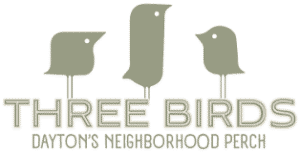
Three Birds: Buy $100 worth of gift card get $50 in Birdie Bucks to spend Jan – March
Underground Chucks: Buy $25 in gift cards, get 2 $5 bonus cards when you buy in the restaurant 11/28-30
Wandering Griffin Brewery & Restaurant: Starting Black Friday buy $50 in Wandering Griffin gift cards → Get a FREE $10 card, Buy $100 in gift cards Get a FREE $20 card.
Black Friday Gift Card Deals on Amazon
Outback Steakhouse Two Restaurant $50 eGift Cards ($100 Value) for $79.99
PF Chang’s Four Restaurant $25 eGift Cards ($100 Value) for $79.99
HOP Four Restaurant $25 eGift Cards ($100 Value) for $79.99
Domino’s Four Restaurant $25 eGift Cards ($100 Value) for $79.99
Cracker Barrel Four Restaurant $25 eGift Cards ($100) for $79.99
Dickey’s Barbecue Four Restaurant $25 eGift Cards ($100 Value) for $79.99
Red Lobster Four Restaurant $25 eGift Cards ($100 Value) for $79.99
Krispy Kreme Four Restaurant $15 eGift Card ($60 Value) for $44.99
DoorDash – $100 Gift Card [Digital] for $85
Darden – $100 Universal Gift Card (Cheddars, Longhorn) $85
Hardee’s – $50 Gift Card [Digital] $40
Dining Deals For Back Friday and Beyond:

Chipotle: Here’s a deal for those who prefer to do their Black Friday shopping online: Chipotle is celebrating Cyber Weekend by offering free delivery for orders placed through the Chipotle app and chipotle.com from Friday, November 28 through Monday, December 1. Use the code “CYBER25” to claim the deal.
Fazoli’s: The Italian-inspired restaurant chain is offering a Black Friday buy-one-get-one-free deal on fettuccine alfredo with the code “Shop25” through the Fazoli’s Rewards app. The deal is valid November 28 through December 1 at participating Fazoli’s locations.
KFC: For Black Friday, KFC is bringing back its fan-favorite Personal Pot Pies, which were last available for the 2024 holiday season, and offering them for only $4.99. The deal provides, the brand says, a “warm, flaky bite of self-care” in the midst of a very busy shopping day.
Long John Silver’s: On Black Friday, November 28, Long John Silver’s has a one-day special: a free Chicken Wrap with a purchase of $10 or more. The deal is valid for in-restaurant orders only.
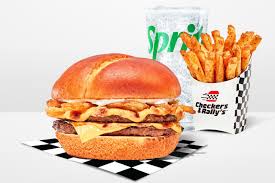 Rally’s: On Black Friday, get a $5 Pretzel Pubster Combo – the new Pretzel Pubster Burger with two beef patties, melted beer cheese with bacon crumbles, American cheese, mayo, and onions on a toasted pretzel bun, plus Famous Seasoned Fries and a drink.
Rally’s: On Black Friday, get a $5 Pretzel Pubster Combo – the new Pretzel Pubster Burger with two beef patties, melted beer cheese with bacon crumbles, American cheese, mayo, and onions on a toasted pretzel bun, plus Famous Seasoned Fries and a drink.
Red Lobster: Cyber Monday and through Dec. 7, you can buy one, get one free of certain entrées (Shrimp Linguini Alfredo, Chicken Alfredo, and Garlic Shrimp Scampi).
Tim Hortons: Tim Hortons U.S. is celebrating this week with a special “Buy 1 Donut, Give 1 Donut” offer. From now until Giving Tuesday on December 2, when you purchase one doughnut, you’ll get a second one of equal or lesser value for free, to give to someone else. The offer is available for Tims Rewards members in the Tim Hortons app and can be redeemed at participating U.S. restaurants, while supplies last.
Wendy’s has a Black Friday deal that riffs on the “6-7” meme – a small Frosty for $0.67 all day. You can get the offer in the Wendy’s app or by ordering in restaurants across the nation.
 Check out our post of other restaurant deal valid throughout the month of December here.
Check out our post of other restaurant deal valid throughout the month of December here.

 Another theory is darker and tied to the American Civil War. According to legend, a Union soldier held in a Confederate prison camp was given a single pickle on Christmas Eve by a guard. That pickle, the story says, gave him just enough strength to survive until he was rescued. Out of gratitude, the soldier supposedly introduced the Christmas pickle tradition once he returned home. Historians have never been able to confirm this tale, but it persists as one of the more dramatic explanations behind the ornament.
Another theory is darker and tied to the American Civil War. According to legend, a Union soldier held in a Confederate prison camp was given a single pickle on Christmas Eve by a guard. That pickle, the story says, gave him just enough strength to survive until he was rescued. Out of gratitude, the soldier supposedly introduced the Christmas pickle tradition once he returned home. Historians have never been able to confirm this tale, but it persists as one of the more dramatic explanations behind the ornament.